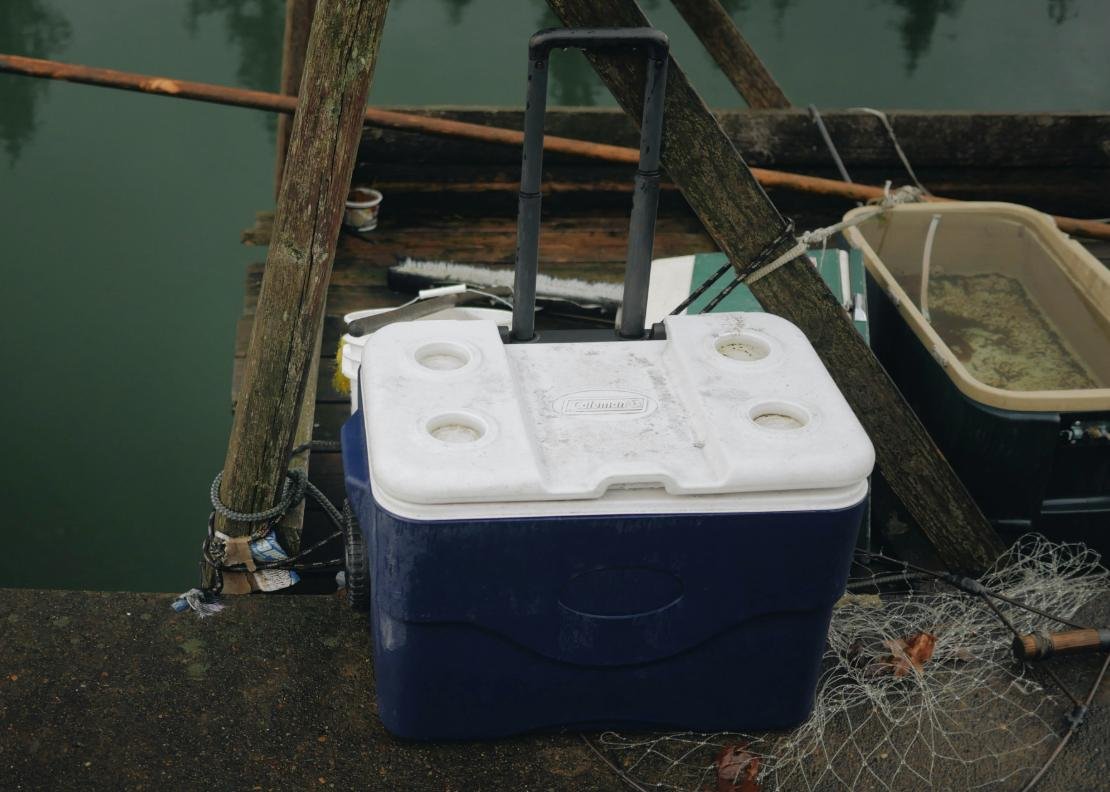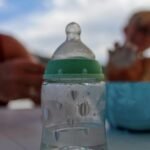Effectively storing breast milk is crucial for maintaining its nutritional quality and ensuring the safety of the infant who will consume it. The general guidelines for storage depend on various factors, including the temperature and specific storage conditions. It is essential to adhere to these guidelines to prevent spoilage and protect the health of the baby.
When it comes to room temperature storage, freshly expressed breast milk can be kept safely for up to four hours. However, when temperatures exceed 77°F (25°C), it is advisable to minimize this timeframe to no more than two hours. For breast milk that is to be refrigerated, it can be stored in a refrigerator set at or below 40°F (4°C) for a maximum of four days. Beyond this period, the quality and safety of the breast milk may diminish.
Freezing breast milk significantly extends its shelf life. Milk that is stored in a freezer at 0°F (-18°C) can last for six months or longer, although using it within three months is preferable for optimal quality. It is worth noting that breast milk may undergo changes in flavor and nutrient levels when frozen, but it still retains essential properties for infant health.
In addition to understanding these timeframes, proper storage techniques play an integral role. Breast milk should be stored in clean, BPA-free containers or bags designed specifically for breast milk. It is best to avoid filling them to the brim to allow for expansion during freezing. Labeling containers with the date of expression ensures that older milk is used first, following the principle of first in, first out. Adhering to these breast milk storage guidelines will help ensure that the milk remains safe for consumption and retains its nutritional value, ultimately supporting the health of infants.
Best Practices for Using Cooler Bags
When it comes to storing breast milk safely, the use of cooler bags is a practical and efficient option. The ideal cooler bags for breast milk should possess adequate insulation to maintain a stable temperature. Insulation helps keep the contents cold, which is critical in preventing bacterial growth and preserving the integrity of the milk. Look for cooler bags that specifically state they are designed for food or medical storage, as these are often built to maintain strict temperature requirements.
Size is another important factor when selecting a cooler bag. It should be spacious enough to accommodate the amount of breast milk you plan to transport, while also ensuring that the milk containers fit snugly inside to minimize movement. A cooler bag that is too large may struggle to retain the cold, so choosing one that is appropriately sized can optimize the cooling effect. Additionally, consider whether you need a bag with multiple compartments. This can help keep milk separate from other items, reducing the risk of contamination.
The material of the cooler bag plays a crucial role in its effectiveness. High-quality, heavy-duty materials tend to provide better insulation and durability. Look for bags that have leak-proof linings to prevent any spills from contaminating other items. Furthermore, when packing breast milk, it is advisable to use ice packs specifically designed for this purpose. Choose ice packs that fit well within the cooler bag while still maintaining a temperature conducive for breast milk storage. When packing the cooler, place ice packs both above and below the milk containers for optimal cooling, ensuring that the milk remains within the recommended temperature range throughout your transportation period.
How Long Can Breast Milk Last in a Cooler Bag?
When it comes to storing breast milk in a cooler bag, the duration of safety largely depends on various factors, including the temperature maintained inside the bag and the presence of ice packs. Breast milk can be preserved for varying lengths of time based on these conditions, thereby ensuring its quality and safety for feeding your infant.
In a cooler bag with ice packs, breast milk can typically last between 24 to 48 hours. Ice packs help to maintain a consistently cool temperature, which is vital for inhibiting bacterial growth. It is recommended that the temperature inside the cooler remains at or below 4°C (39°F) to ensure safe storage. If you are using a high-quality insulated cooler with plenty of ice packs, you can expect the milk to remain safe for the longer end of this spectrum.
Conversely, if storing breast milk in a cooler bag without ice packs, the guidelines change considerably. In this situation, breast milk should generally be used within 4 to 6 hours, assuming the temperature does not exceed around 15°C (59°F). Higher temperatures can accelerate spoilage, making it crucial to monitor the heat exposure of the cooler bag during outings or travel.
Environmental conditions can also impact how long you can safely keep breast milk. On hot days or during outdoor activities where temperatures rise, the milk can spoil quickly if the cooler bag lacks sufficient refrigeration. Conversely, cooler weather may extend the duration slightly, but it is important to err on the side of caution. Utilizing a thermometer to assess the internal temperature can enhance the efficacy of your storage practices, ensuring your child receives safe and nourishing breast milk. Thus, being mindful of both ice pack usage and temperature monitoring can significantly impact how long breast milk can remain safely stored in a cooler bag.
Signs of Spoiled Breast Milk
Identifying spoiled breast milk is essential for ensuring the health and safety of your baby. While following recommended storage guidelines—such as keeping milk in a cooler bag—can significantly reduce the risk of spoilage, visual and olfactory assessments are invaluable tools in your evaluation process. Understanding the signs of spoilage can help caregivers make informed decisions about whether to discard or safely feed breast milk to their infants.
One of the most noticeable indicators of spoiled breast milk is a change in appearance. Fresh breast milk typically has a creamy consistency with a slightly yellowish hue. If you observe separation of the milk into different layers, this may indicate that the milk has begun to spoil. In some cases, the milk might also develop a grainy texture or appear curdled. Any visible clumping or unusual sediment should prompt immediate disposal of the milk, as these changes suggest bacterial growth or contamination.
Alongside visual cues, scent is another key factor to consider when assessing breast milk. Fresh breast milk has a mild odor that some may describe as sweet or nutty. If you detect a rancid, sour, or otherwise off-putting smell upon opening the container, this is a definite sign of spoilage. The presence of unpleasant odors is often attributed to the breakdown of fats within the milk, leading to off-flavors that are unsafe for consumption.
It is vital to assess breast milk thoughtfully, even when stored within the recommended timeframes. Each storage method presents its own risks, and environmental factors can contribute to rapid spoilage. Always trust your instincts; if there are any doubts regarding the milk’s safety, it is best to err on the side of caution and discard it. Regular checks for signs of spoiled breast milk ensure that you provide only the best nutrition for your baby.
Transporting Breast Milk: Tips and Tricks
Transporting breast milk requires careful planning and execution to ensure its safety and nutritional integrity. When preparing to transport breast milk, it is essential to consider the timing. Always express and store breast milk in a clean environment, making sure to refrigerate or freeze it immediately after collection. For travel, freshly expressed milk should ideally be used within four hours if kept at room temperature, or up to 24 hours if stored in a cooler bag with ice packs.
Utilizing a cooler bag specifically designed for breast milk storage is crucial. Choose a high-quality, insulated cooler that can maintain the desired temperature. When packing your cooler, place ice packs underneath and between the bottles of breast milk to ensure even cooling. It is advisable to use multiple ice packs to prolong the cooling effect. Furthermore, placing the cooler bag in a shaded area during transit can help maintain its cold temperature, as direct sunlight may compromise its effectiveness.
Another practical tip is to minimize the time breast milk spends outside of refrigeration. Whenever possible, limit the number of times the cooler bag is opened to maintain a consistent internal temperature. If you know you will need to feed your baby during travel, consider timing the feedings to coincide with your travel breaks, thereby reducing the amount of time the breast milk is exposed to warmer conditions.
Additionally, always label the containers with the date and time of expression for effective tracking. This labeling will assist caregivers in using milk within recommended timeframes. By following these guidelines for transporting breast milk, you can ensure that your baby receives safe and nutritious meals even while on the go.
Breast Milk Thawing Guidelines
Thawing breast milk safely is a crucial aspect of infant nutrition that caregivers must prioritize. When thawing frozen breast milk, it is essential to do so in a manner that minimizes the risk of bacterial growth and preserves the milk’s beneficial properties. The preferred method for thawing is to move the milk from the freezer to the refrigerator, allowing it to thaw gradually. This process can take several hours or, in some cases, overnight, but it is the safest and most recommended approach.
Another effective method involves placing the sealed container of frozen breast milk under cool running water, gradually increasing the temperature until the milk is fully thawed. This method is faster than refrigeration, yet it still provides a level of safety. It is important to avoid using a microwave for thawing breast milk, as the uneven heating can create hot spots that may scald an infant’s mouth and degrade the milk’s nutritional quality.
Once breast milk has been fully thawed, it should be used within 24 hours if stored in the refrigerator. This timeframe is crucial for ensuring the milk remains safe for consumption and retains its nutritional value. Additionally, thawed breast milk should never be refrozen. Refreezing thawed milk can compromise its quality and may result in the loss of essential antibodies and nutrients that are vital for a growing infant.
In conclusion, following established breast milk thawing guidelines is imperative for ensuring the safety and health of nursing infants. By utilizing appropriate thawing methods, caregivers can guarantee that breast milk remains a nourishing and safe option for their babies. Remember, consistency in proper handling and storage will optimize the benefits that breast milk can provide.
Frequently Asked Questions about Breast Milk Storage
Breast milk storage is a topic of great importance for nursing mothers. One common question is how long breast milk can be kept in a cooler bag. Generally, freshly expressed breast milk can be safely stored in a cooler bag for up to 24 hours, provided it is kept at a temperature of 59°F (15°C) or lower. To maintain this temperature, it is advisable to include ice packs in the cooler. Understanding the specifics of breast milk storage can help ensure that the nutritional and immunological qualities of the milk are preserved.
Another frequent concern revolves around the potential for breast milk to spoil during transportation. It is essential to recognize the signs of spoilage. Breast milk that has a rancid smell or off taste should not be used. Mothers often wonder if they can refreeze breast milk that has been thawed, and the recommendation is clear: thawed breast milk should not be refrozen. Once breast milk has been exposed to room temperature for more than four hours, it should be discarded to avoid any risk of bacterial growth.
Additionally, the question of whether breast milk can be mixed from various pumping sessions often arises. Mixing different batches of breast milk is permissible; however, ensure that the oldest milk is used first to maintain safety. Furthermore, mothers may inquire about the best practices for labeling milk containers. It is advisable to label all storage bags or bottles with the date and time of expression to help prioritize usage.
Finally, another misconception is about warmer temperatures and their effect on breast milk. Prolonged exposure to temperatures above 77°F (25°C) can significantly reduce the viability of breast milk. To avoid potential risks, always take precautions, especially when using a cooler bag which can sometimes be underestimated for its effectiveness. With the right knowledge, nursing mothers can confidently manage their breast milk storage while ensuring its safety for their infants.
Resources for New Mothers
As new mothers embark on their breastfeeding journey, access to reliable resources and supportive communities becomes crucial for ensuring both mother and baby thrive. A number of reputable organizations provide valuable information, tools, and support systems to assist mothers in their breastfeeding endeavors, especially when it comes to understanding proper breast milk storage methods.
One key resource is the La Leche League International. This organization offers a wealth of information on breastfeeding techniques, addressing common concerns such as how long breast milk can be safely stored. Their local groups also provide peer support where mothers can share experiences and gain encouragement from one another.
The Centers for Disease Control and Prevention (CDC) is another essential resource. The CDC provides comprehensive guidelines on breastfeeding, including detailed instructions on how to safely store breast milk, whether in a cooler bag or otherwise. Their guidelines also cover the necessary precautions mothers should take to maintain the quality of breast milk.
For more personalized guidance, the National WIC Association offers support to families throughout the breastfeeding process. Their programs include nutrition education and breastfeeding support, often providing informative pamphlets that detail safe storage and handling of breast milk.
Finally, online forums such as Mumsnet and BabyCenter host communities where mothers can ask questions, share experiences, and find advice on various topics related to breastfeeding and milk storage. Engaging with these platforms can significantly enhance a mother’s confidence and knowledge about breastfeeding.
These resources collectively serve as invaluable tools for new mothers, ensuring they are well-equipped with the knowledge needed to successfully navigate the world of breastfeeding and breast milk storage.
Conclusion: Best Practices for Safe Breast Milk Storage
In summary, ensuring the safe storage of breast milk is critical for maintaining its nutritional quality and preventing bacterial growth. Mothers should adhere to established guidelines to guarantee the health and safety of their babies. The use of a cooler bag for transporting breast milk is a convenient option, provided that the cooler is well insulated, packed properly, and maintained at an appropriate temperature.
Breast milk can be safely stored in a cooler bag for up to 24 hours if ice packs are used to keep the temperature below 15°C (59°F). It is imperative to store breast milk in clean, sealed containers, whether they are bottles or storage bags designed for this purpose. Always label containers with the date of expression to prioritize the consumption of the oldest milk first.
When transitioning milk storage from the cooler bag to the refrigerator, it is essential to remember that breast milk can remain safely stored in the fridge for up to four days, though it is best to consume it within three days for optimal freshness. If longer-term storage is necessary, freezing is an effective option. Frozen breast milk can last for up to six months in a conventional freezer, while it can remain safe for up to 12 months in a deep freezer. However, mothers should always follow progressive thawing methods and avoid refreezing thawed milk.
By following these best practices for safe breast milk storage, mothers can ensure that their infants receive the best nutrition possible. Adhering to these guidelines is vital not only for the quality of the milk but also for safeguarding the overall health of their babies.


